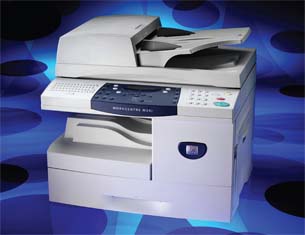Latest News
September 1, 2010
By Siemens PLM
Editor’s Note: This content is sponsored by Siemens PLM.
 |
Xerox Corporation is the world’s leading document management technology and services company with the industry’s broadest product portfolio. Xerox offers digital color and black-and-white printing and publishing systems, digital presses and “book factories,” multifunction devices, laser and solid ink network printers, copiers and fax machines.
Xerox sells its products into a mature market where the competition is fierce (competitors include such well known companies as Ricoh, Canon, Konica-Minolta and Hewlett-Packard) and gains in market share are hard won. Like all the players in the high tech and electronics industry, Xerox is also dealing with an increasing number of mandates and regulations aimed at making its products less harmful to the environment.
“These are challenging times,” says Korhan Sevenler, the company’s director of Product Lifecycle Management (PLM). Sevenler’s mission is to make sure that Xerox’s product development systems keep pace with the industry’s challenges. Part of that, he says, includes a significant reduction in the time and cost of bringing new products to market. “Xerox must continue to deliver innovative, high quality solutions faster then ever,” he says. “But at the same time, we need to be spending less on our product development environment. The product development environment must be lean and highly optimized.”
Challenges:
Keys To Success:
Results:
|
Replacing legacy systems with a unified solution
Underlying Xerox’s strategy for a lean and effective product development environment is a unified PLM solution from Siemens PLM Software. Xerox made the decision to standardize its operations in the United States (US) and the United Kingdom (UK) on the Teamcenter® digital lifecycle management solution and the NX™ digital product development system, replacing a mix of proprietary and commercial software. “Over the years, we acquired a number of applications that eventually became part of the Siemens PLM Software portfolio,” explains Sevenler. “We purchased them because they were the best tools on the market at the time. But we had other commercial and in-house programs as well.
“When we made the decision to standardize on Teamcenter and NX, it was so that we could have a unified solution for the entire company rather than local toolsets,” he continues. “The goal is to have a single source of record for all product information. “When the transition to the Teamcenter/NX solution is complete, Xerox will have more than 1,200 people using these applications in the US and UK.
Making the business case for PLM
“We see a great deal of value in using an integrated system,” says Sevenler. Indeed, before making the decision to standardize on a Siemens PLM Software solution, Xerox studied the potential return on investment and predicted a nearly $5 million reduction in product development costs at its UK facility alone.
These savings come from process improvements such as: a single source of product data (including environmental compliance data) that makes information quickly accessible throughout the enterprise; replacing manual, paper-based processes (engineering change, drawing release, etc.) with automated workflows managed by Teamcenter; and virtual design reviews using the Teamcenter visualization functionality.
These process improvements significantly reduce the amount of non-value-added time spent during product development, helping achieve the lean process Xerox is aiming for. In each activity where time is spent more efficiently, significant savings are evident. Having a single source of product data, for example, saves Xerox nearly $1.5 million per year by allowing people to spend 50 percent less time searching for information than they did previously. Replacing the paperbased change management process with an automated one saves $166,000 in a year simply because people spend less time walking documents from place to place to get sign-offs.
 |
“The introduction of Teamcenter for problem and change management has brought us into the twenty-first century, opening up a one-stop shop enabling global visual access within our organization of all actions, tasks, problems and metric tracking at the click of a button,” says Colin Saggers, configuration and change control manager at the UK facility. “Teamcenter has improved the visibility, speed, reliability and data integrity of everyday business within our R&D environment, considerably reducing the processing time of design changes, and in turn freeing up a considerable number of people hours in retiring the old manual, paperbased processes and several cumbersome bespoke legacy systems.”
In addition to hard dollar savings, Xerox sees other benefits from the unified PLM approach. One example is the avoidance of rework caused by lost data or traceability problems. Another is an improved ability to benefit from lessons learned made possible by NX Knowledge Fusion – one of the reasons why Xerox chose NX. The company is planning to use Knowledge Fusion functionality to capture some of the specific design knowledge and lessons learned for future designs. In addition, modeling and simulation is enabling Xerox to get new products to market better, faster and cheaper by helping to eliminate some physical prototypes.
“We are convinced that a unified PLM approach will help us bring better products faster to the market with lower costs,” concludes Sevenler. “Our competitive strategy for the future includes an integrated product lifecycle process and system and working closely with Siemens PLM.”
Subscribe to our FREE magazine, FREE email newsletters or both!
Latest News
About the Author
DE’s editors contribute news and new product announcements to Digital Engineering.
Press releases may be sent to them via [email protected].






